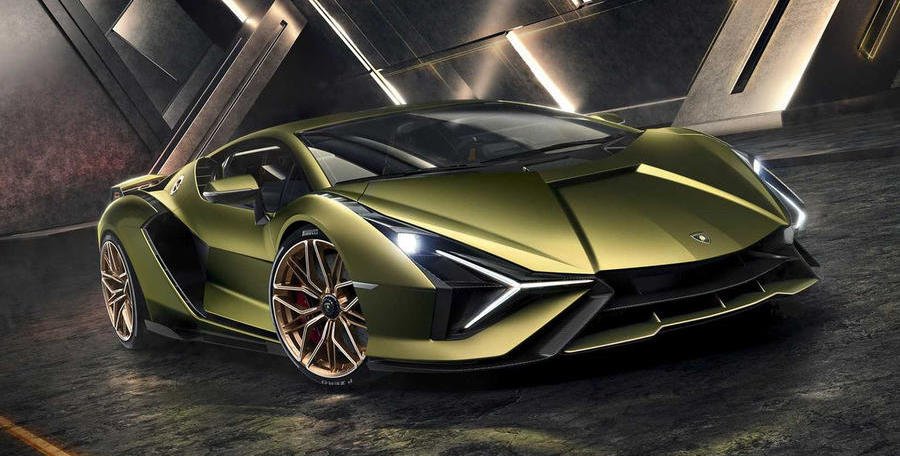Last year was a whirlwind, with important releases in every model category from the Toyota GR Supra to the Vauxhall Corsa and the Mercedes-AMG A45 - to name but a few. But if 2019 was good, 2020 promises to be even better.
Some of 2020's biggest debuts have already had the covers pulled off them, but there are still plenty of big releases to be drooled over this year.
Here's your one-stop shop for keeping up to date with what's coming when in the car industry in 2020.
Please note: Due to the global shutdowns caused by the coronavirus pandemic, all dates are approximate and subject to change.
May
Audi A3 Sportback
Audi's sibling to the new Volkswagen Golf sports new underpinnings, a tech-fest of an interior, a mild-hybrid engine option and RS-inspired exterior styling. The five-door hatchback comes as a petrol, mild-hybrid petrol, diesel and plug-in hybrid. Inside, the minimalism of the current A3 makes way for a large digital instrument display and a big touchscreen. Audi has also promised improved ride and handling qualities.
Ford Kuga
Revealed last April, the new Ford Kuga won't be on sale for a few months yet. Ford acknowledges it has been slow to launch truly competitive SUVs. One in five Fords sold is an SUV, whereas across the industry it's one in three. So the Kuga and the smaller Puma are leading the comeback. The new Kuga will be offered with petrol, diesel, mild hybrid, hybrid and plug-in hybrid powertrains. Using a platform shared with the Focus should ensure it has strong driving dynamics and the interior will be familiar from the big-selling family hatchback too.
Hyundai i20
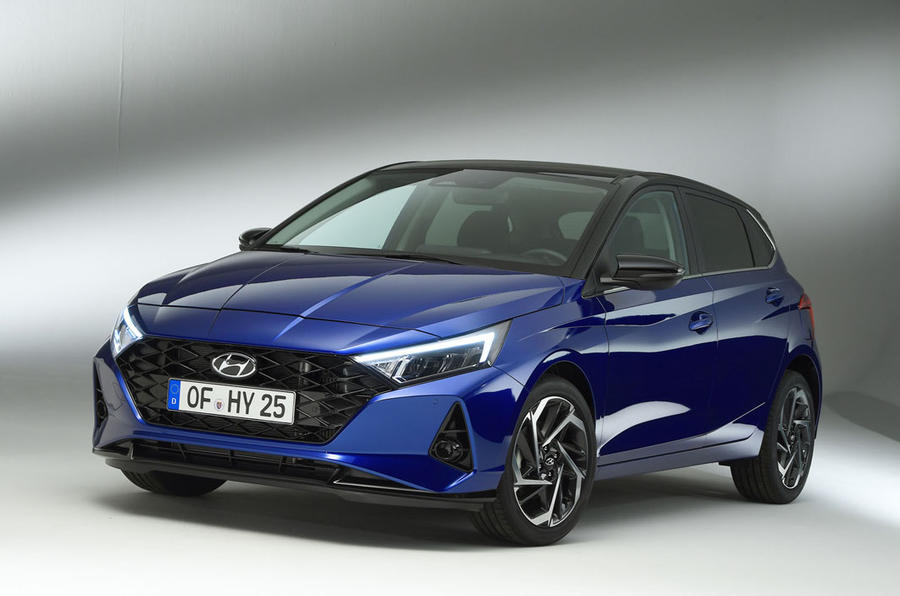
The latest version of the Korean firm's Ford Fiesta rival is expected to feature a refreshed design that takes cues from the larger i30, along with upgraded interior technology taken from larger models in the range. While the regular i20 will likely continue with a range of small and efficient engines, Hyundai's N division is also working on a high-performance i20 N hot hatch, which has been spied undergoing development work at the Nürburgring.
Hyundai i30 and i30 N
Hyundai i30 N Hyundai's Golf GTI-rivalling hot hatch and its Fastback sibling will be given mid-life makeovers shortly after regular versions of the i30 are updated. Don't expect much in the way of power upgrades to go along with the refreshed styling, but Hyundai's N performance arm could make revisions to the chassis and other areas to boost driver engagement.
Kia Ceed Sportswagon PHEV and Xceed PHEV
Each priced at around £30k, these petrol-electric plug-in hybrid family cars – one an estate, the other an SUV-look hatchback – will greatly reduce running costs for company car drivers. With a four-cylinder 1.6-litre petrol engine, an electric motor and an 8.9kWh battery pack, they can drive for 37 and 36 miles respectively on electricity alone.
Mercedes-Benz GLA and Mercedes-AMG GLA 35
The second generation of the compact crossover is again based on the A-Class hatchback, but the ground clearance has been further raised and more rugged styling elements added. Mercedes has also put a focus on adding new technology and improving interior comfort, including a new free-standing digital instrument/infotainment panel. The launch line-up comprises the front-drive GLA 200, with a 161bhp 1.3-litre three-cylinder engine, and the hot Mercedes-AMG GLA 35, with a 302bhp turbocharged 2.0-litre unit. The latter model also gains a number of AMG styling elements. Further options will follow later in the year.
Mercedes-AMG GLB 35
Mercedes-Benz's compact seven-seat SUV has been given a makeover by the firm's AMG performance arm. It produces 302bhp and 295lb ft from a 2.0-litre turbocharged engine (also seen in the GLA 35), making it 80bhp and 37lb ft more powerful than the current GLB range-topper. The GLB 35, which will still be offered with five or seven seats, has a 0-62mph time of 5.2sec, with a limited top speed of 155mph.
Mercedes-Maybach GLS
The German car firm's luxury brand has reworked the GLS large SUV into an ultra-luxury model designed to compete with the Bentley Bentayga. Featuring bespoke styling elements and standard 22in wheels, the GLS is powered by a turbocharged 4.0-litre V8 mated to a 48V electrical system, making it a mild hybrid. There's a major focus on interior luxury, including nappa leather upholstery and – in four-seat guise – even the option of an in-car fridge.
Polestar 1
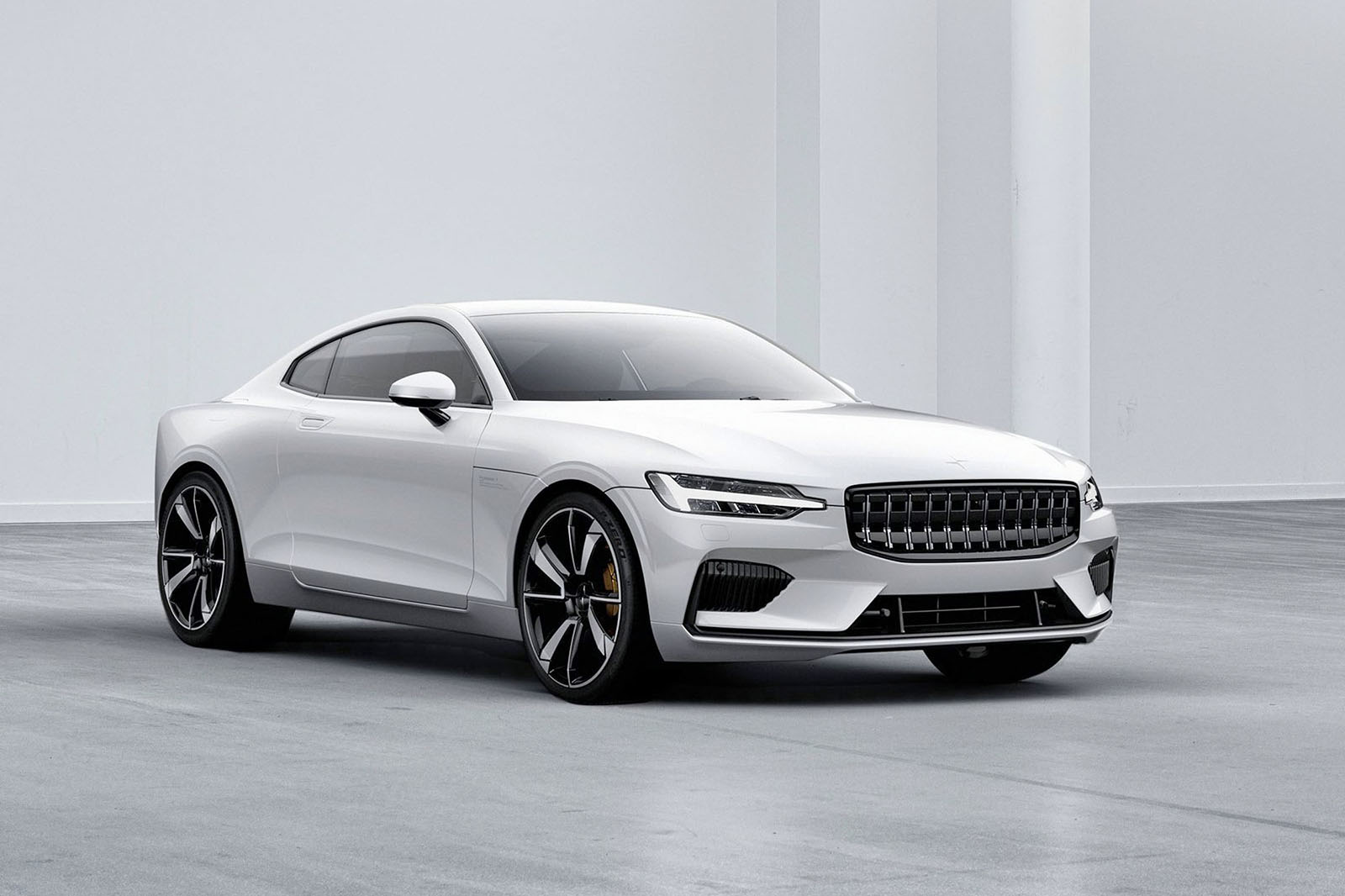
Volvo's spin-off performance brand will focus on full electric models, but this limited-run 601bhp hybrid coupé is intended as a spectacular flagship model. Power comes from a 2.0-litre turbocharged and supercharged engine mated to three electric motors, yielding 738lb ft of torque and a 0-62mph time of 4.2sec. Just 1500 examples will be built in the next three years, and the £139,990 machine will be left-hand-drive-only.
Porsche 718 GTS
Autocar understands Porsche will bring back six-cylinder power for the 718 Cayman/Boxster with a range-topping GTS that'll pack a naturally aspirated engine. That should help to appease those who decried a Porsche sports car with four cylinders - a particular issue in the US, it seems. Details are yet to be confirmed, but we expect it will be linked to the new 4.0-litre engine family that made its debut in the 718 Cayman GT4 and 718 Boxster Spyder.
Seat Leon
It's a testament to just how good the current Leon is that it remains among the best in class seven years after its launch. Forget the Ateca; it's the Leon that has given Seat the platform to grow and forge a reputation for cars capable of competing at the very top of the class. Now Seat has settled on a successful formula, it isn't about to change it. So the new Leon will be based on the latest VW Golf and share much of its tech. It will also follow the Mk8 Golf's strategy of offering greater refinement and all-round improvement over the current recipe, rather than adopting a more radical approach.
Suzuki Swift Sport MHEV, SX4 S-Cross MHEV and Vitara MHEV
Suzuki has added an integrated starter-generator with 48V electrical architecture to its hot hatch and pair of crossovers, improving official fuel economy by up to 20% and therefore also reducing CO2 emissions. Unfortanately, however, this means a power drop and therefore another second onto the 0-62mph time of the Swift Sport, as well as a price rise.
Uniti One
Never heard of Uniti? The Swedish EV start-up has big ambitions to sell the One, not just to private customers but also to businesses as a fleet mobility solution. Priced from just £15k, it has three seats in a McLaren F1-style layout, will do 75mph flat out and weighs just 600kg. Top models have a range of up to 186 miles. It's also engineered in Norfolk, where it will initially be built. The engineering brief, according to the boss of Uniti, was to "build a safe car that's lightweight. UK engineers are the best in the world at that".
Vauxhall Corsa-e
The electric version of Vauxhall's reinvented Corsa takes on the Renault Zoe with a 211-mile range and 0-31mph time of 3.1sec. Prices for the five-door EV start from £26,790, making it a direct competitor for entry-level variants of Volkswagen's new ID 3, with first customer deliveries set to take place in early 2020.
Vauxhall Insignia and Insignia GSi
Vauxhall has updated its Volkswagen Passat-rivalling executive model – now available only as a five-door fastback – with lighter, more frugal petrol and diesel engines, plus a number of exterior changes and upgraded technology. The GSi performance model will also return, with a 227bhp turbocharged four-cylinder petrol engine, new adaptive suspension, revised steering and four-wheel drive.
June
Aston Martin Valkyrie
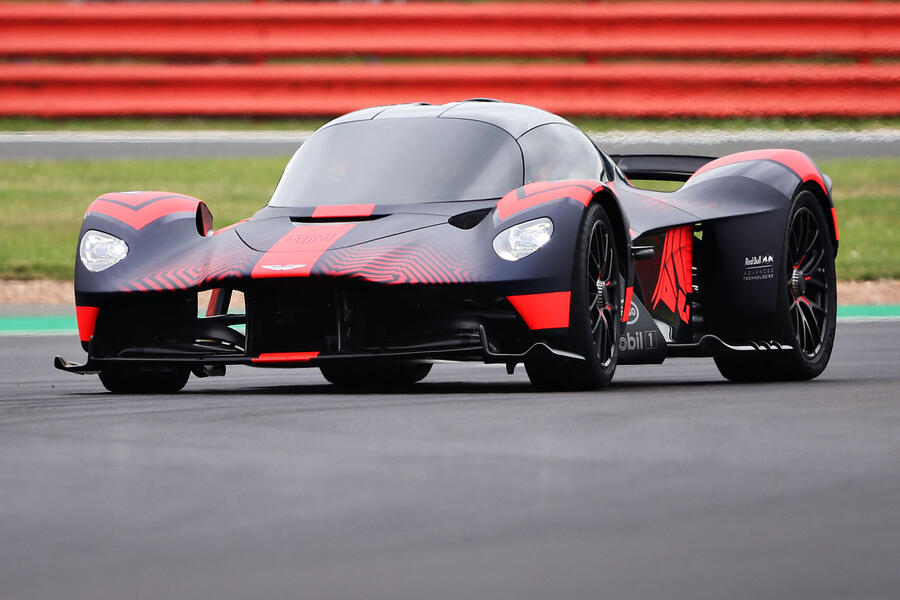
Created with input from Formula 1 design ace Adrian Newey and claimed by Aston boss Andy Palmer to be capable of lapping Silverstone "as fast as an F1 car". Power comes from a 6.5-litre Cosworth-developed V12 engine and a Rimac-derived electric motor. Sources have suggested the Valkyrie will generate up to 4000lb (1816kg) of downforce at top speed.
Audi E-tron Sportback
Audi has taken the rear roof section of the A7 Sportback, its five-door luxury coupé, and grafted it onto the incredibly refined E-tron electric SUV to produce the E-tron Sportback. It has also introduced a number of mechanical improvements over its first dedicated EV in order to eke out a few extra miles of range.
BMW M2 CS
Commanding a near-50% price premium over the M2 Competition, the limited-edition CS features bespoke weight-saving elements – including a plastic bonnet and carbonfibre roof – and a 444bhp reworking of the standard car's 3.0-litre straight six. The run-out model is available with a six-speed manual gearbox or seven-speed dual-clutch automatic, with adaptive suspension and M Sport seats as standard.
BMW M8
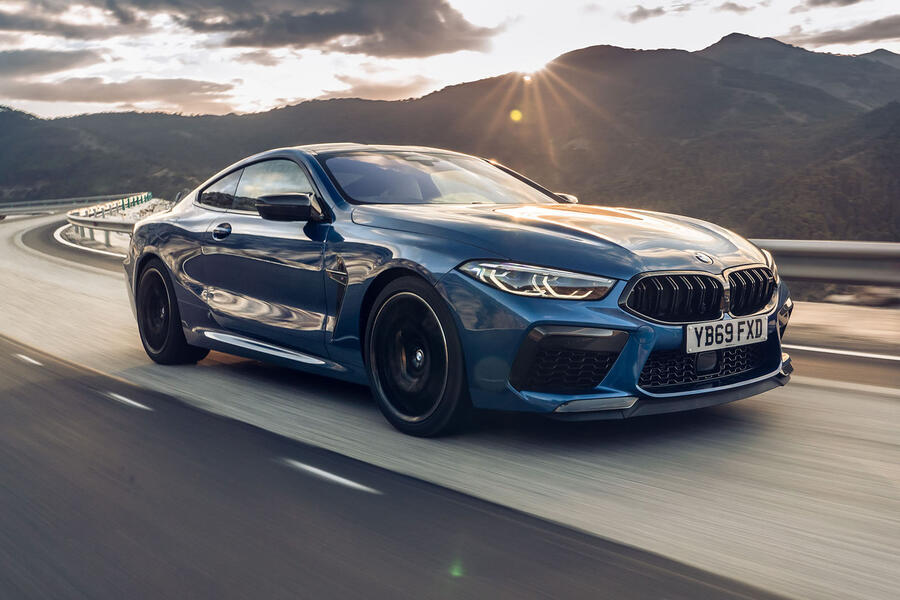
The most powerful and fastest two-door model yet sold by the German car maker promises to be something pretty special. Available in top-level Competition form only in the UK, the hottest 8 Series variant will arrive wielding 616bhp from a 4.4-litre twin-turbocharged V8 - enough for a 0-62mph time of just 3.2sec. Yet it remains a luxurious, four-seat, leather-lined cruiser, with four-wheel drive to help transfer all that power to the road.
Citroën C5 Aircross PHEV
A significant car for the French brand: it's Citroën's first ever plug-in hybrid, and part of a much broader electrification offensive for the PSA Group. Sharing its petrol-electric powertrain with the plug-in Vauxhall Grandland X and Peugeot 3008 (albeit in a lower-powered form than top models), it makes 222bhp, promises an all-electric range of 31 miles and emits just 39g/km of CO2 officially. UK pricing starts from £35,340.
Ferrari SF90 Stradale
Ferrari isn't ditching petrol engines just yet; the heart of its new flagship model is a 769bhp twin-turbo V8. But since that's clearly not enough power, the V8 is mated to three motors for four-wheel drive, 986bhp and 16 miles of electric-only running if you plug it in. According to Ferrari, the SF90 is faster than the LaFerrari, stops better than the LaFerrari and, even better, is a series-production model.
Honda E
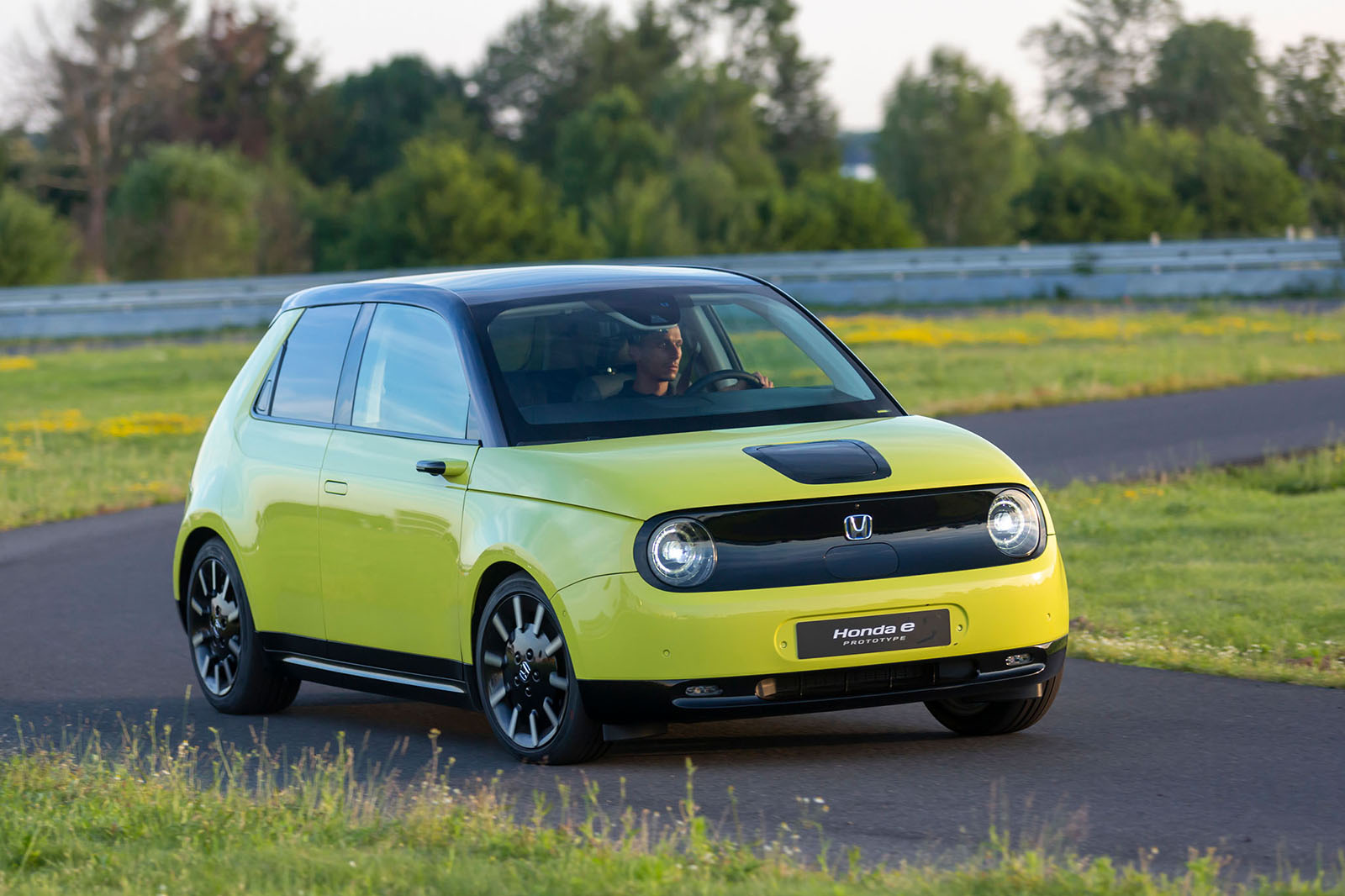
Yes, it may have softened a bit from the ultra-retro Urban EV concept, but the Honda E is still a seriously cool-looking, compact electric city car that brings an air of premium rarely seen in a Honda. It's a different league from a Jazz inside, too, with an array of hi-tech features. At around £27,000 (after the £3500 government grant), it isn't exactly a budget offering, and its 136-mile range is fairly modest, but that should make it significantly smaller and lighter than longer-range rivals.
Mercedes-AMG GLS 63
The gargantuan seven-seat GLS is the latest Mercedes SUV to receive the full AMG makeover. Described by Mercedes-AMG boss Tobias Moers as a vehicle for customers "not willing to accept compromises when it comes to versatility, effortless superiority and spaciousness", the GLS 63 packs a 603bhp mild hybrid 4.0-litre twin-turbo V8, giving a faintly ludicrous 0-62mph time of 4.2sec. Air suspension helps the ride, and the interior maintains seven seats and plenty of space for a modicum of practicality.
Morgan Plus Four
It may look almost identical to the Plus Four of the 1950s, but this car is 97% new and only the second Morgan to use the firm's new aluminium-bonded underpinnings. The retro sports car uses the same turbocharged 2.0-litre four-cylinder BMW engine as the Toyota GR Supra yet is significantly lighter, while the platform's arrival into modernity, plus the new steering and all-independent double suspension, should yield greatly improved ride and handling.
Polestar 2
Given the strong reputation of Polestar owner Volvo, the new performance brand's first mainstream model, the 2, has good potential. The Tesla Model 3 rival is a five-door fastback with 402bhp, 487lb ft, a 0-62mph time of less than five seconds and a range of 311 miles. It sits on Volvo's CMA platform, also used by the XC40 SUV, and will have a distinct Volvo flavour inside as well as bespoke technology. The 2 will be launched initially in top-spec First Edition form and sold online only.
Renault Mégane and Mégane Sport Tourer E-Tech
Renault's family hatchback and estate have received a mid-life facelift, with refreshed styling, new technology inside and a plug-in hybrid powertrain. This uses a 1.6-litre petrol engine and two electric motors, giving it an electric-only range of 31 miles. Meanwhile, every Mégane RS variant now makes 296bhp.
July
Aston Martin DBX
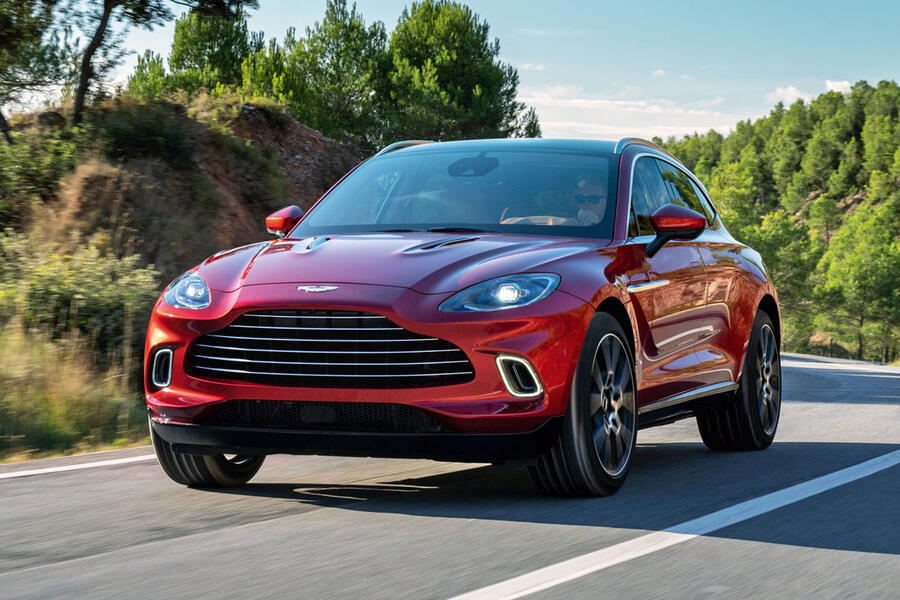
Aston Martin's most important car launch for a decade, the DBX is the firm's first SUV and has a lot resting on its shoulders. It has been a turbulent time since the company floated on the stock market in 2018 and CEO Andy Palmer believes the DBX will be pivotal in reassuring investors and analysts alike and propel Aston Martin into the next phase of its so-called 'second-century plan'. The DBX should become the brand's best-selling model, with a target of 10,000 sales per year by 2021. The five-seat 4x4, powered by an AMG-sourced 542bhp 4.0-litre turbo V8, will cost £158,000 before options. Other powertrains, including a plug-in hybrid, are expected further down the line.
Aston Martin Vantage Volante
Aston Martin is going after the Porsche 911 Cabriolet with a drop-top version of the Vantage. The slightly heavier model will pack the same AMG-derived 503bhp V8 as its coupé sibling, with that car's low front grille and 'ducktail' rear spoiler also carried over. The Vantage Volante is set to hit dealerships in spring and prices are expected to start from around £130,500.
Audi S3
Audi's next S3 hot hatchback is set to produce more than 300bhp from an uprated version of the VW Group's EA888 2.0-litre turbo. There will be changes inside too, with the Volkswagen Golf R rival expected to feature a significant technology upgrade. As with its TTS sports car sibling - with which it shares an engine - it will gain a petrol particulate filter and is likely to be offered exclusively with a seven-speed dual-clutch automatic gearbox.
Honda Jazz
The fourth generation of Honda's UK best-seller features revamped styling and hybrid-only powertrains. The supermini is powered by a downsized version of the CR-V SUV's dual-motor hybrid system, and while Honda has yet to confirm its exact specifications, it claims the system will offer "an exceptional blend of strong and effortless driving performance and impressive fuel economy".
Jaguar F-Pace
Perceived quality and technology upgrades will be the focus of the F-Pace's 2020 redesign. The SUV is set to benefit from systems first seen in the I-Pace and new mild hybrid engines will be introduced, but don't expect any radical styling changes. While disguised prototypes clearly show the design influence of the updated F-Type - with slimmer headlights and brakelights - we can see that the BMW X5 rival retains key characteristics such as its rising beltline and rakish roofline.
Jeep Gladiator
About as big a vehicle as you can get on four wheels is coming to the UK. Surprisingly - given the popularity of pick-ups in the States - it's Jeep's first truck since 1992, but it's hardly a step out of the off-road giant's comfort zone. Measuring nearly 800mm longer than the four-door Wrangler SUV, the Gladiator can cram 725kg into its load bay and boasts a towing capacity of nearly 4.4 tonnes.
Lamborghini Sián FKP 37
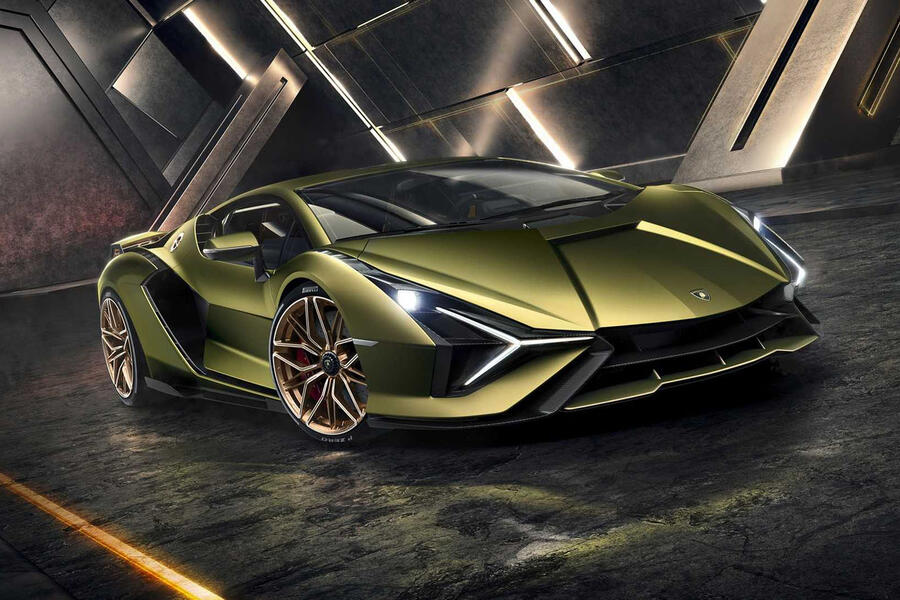
The fastest-accelerating Lamborghini yet is also the firm's first hybrid – and the magical V12 survives as part of it. Officially named FKP 37 in honour of late Volkswagen Group boss Ferdinand Piëch, the limited-run hypercar packs 774bhp from an uprated version of the firm's 12-pot goliath, plus a low-output 48V electric motor for a total of 808bhp.
Lexus LC Convertible
The drop-top variant of Lexus' BMW 8 Series rival has long been in development and will finally arrive this year in production form. A V6-powered hybrid version will arrive down the line, but for now we'll make do with the LC500's howling naturally aspirated 5.0-litre V8 - one of the last production engines of its kind - which should sound even better with the roof down.
Mercedes-AMG GLE 63 S and GLE 63 S Coupé
Affalterbach's high-performance versions of the new, second-generation GLE and its swoopier sibling pair the signature AMG twin-turbocharged 4.0-litre petrol V8 with a 48V mild hybrid system for 603bhp in S specification, which will be UK buyers' only option. This goes along with a nine-speed automatic gearbox, fully variable full-wheel drive, active air suspension, active roll stabilisation and seven driving modes.
Pininfarina Battista
The first offering from Automobili Pininfarina is a 1900bhp 'halo' model for a line-up that will stretch from electric hypercars to upmarket performance-themed SUVs. Much of the technology has been developed by the increasingly influential Rimac, and fine-tuned with input from Formula E racer Nick Heidfeld. It's said to be the most powerful Italian road car yet, with its makers claiming a 0-62mph time of less than two seconds and a top speed of 217mph.
Porsche 911 Turbo and 911 Turbo S
The new 911 Turbo will be a faster and pricier variant of Porsche's flagship sports car. It's likely to be powered by a 3.8-litre flat six with roughly 600bhp and be capable of more than 200mph, with styling changes including a redesigned rear end, new wheel designs and a quad-exit exhaust system.
Skoda Octavia and Octavia Estate
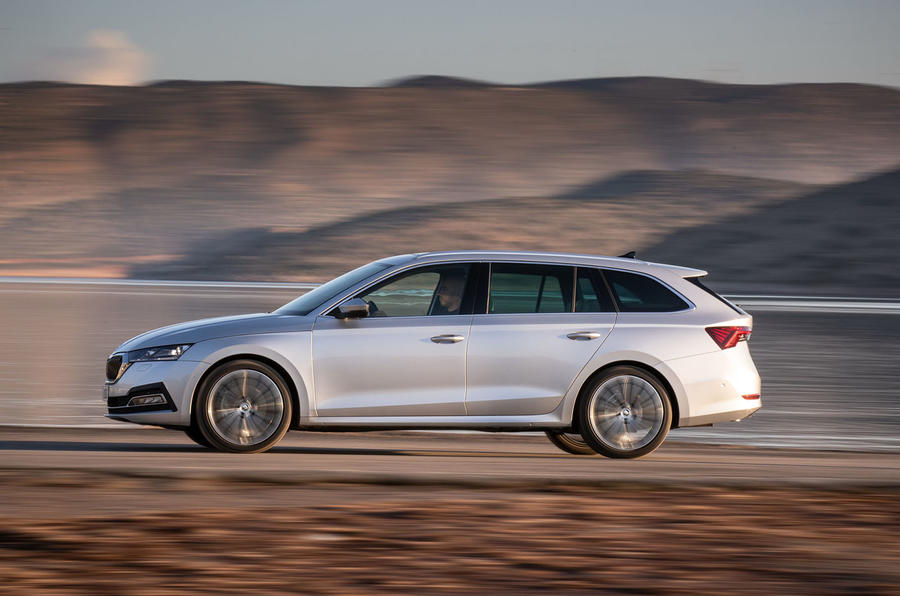
The estate version of Skoda's best seller has long been a popular choice for this seeking an affordable family car with vast amounts of interior space, and the new, Mk4 version will share all the upgrades with the hatchback variant. For the estate, that means both refreshed styling and an increase in size, adding 30 litres to the already substantial boot. A range of powertrains will be offered including, for the first time, a 201bhp plug-in hybrid. That said, the rear-mounted battery in that model does significantly reduce that lovely luggage space.
Volkswagen Golf GTE
When it was revealed alongside the standard Golf, the GTE was the most powerful variant of the eighth-generation car. It will again combine a 1.4-litre turbocharged petrol engine with an electric motor and 13kWh battery that will allow for up to 43 miles of zero-emissions driving. It will be able to reach 87mph without any assistance from the petrol engine, and while performance and economy figures have yet to be confirmed, a total power output of 242bhp puts it close to the petrol-only Golf GTI.
Volkswagen ID 3
This, Volkswagen claims, is its most important car since the original Golf. The first to be built on the electric MEB platform, it spearheads a huge EV push that will see almost every major vehicle category feature an electric Volkswagen. Our first test, in a prototype, suggests it's a credible EV contender – and a truly good hatchback regardless of powertrain. It's priced from £27,500 (after the £3500 government grant) - about the same as smaller rivals, showing how the brand's enormous economies of scale seem to have given it the edge over other car makers.
August
Alpina B8
With the 8 Series launching in three bodystyles over the past year or so, it was only natural that long-standing performance brand Alpina would launch its own take on the range-topping model. Spotted initially in four-door Gran Coupé form, it's expected to roll out to the coupé and convertible models in due course, taking the fight to the Porsche Panamera with a 600bhp 4.4-litre V8.
Honda Civic Type R
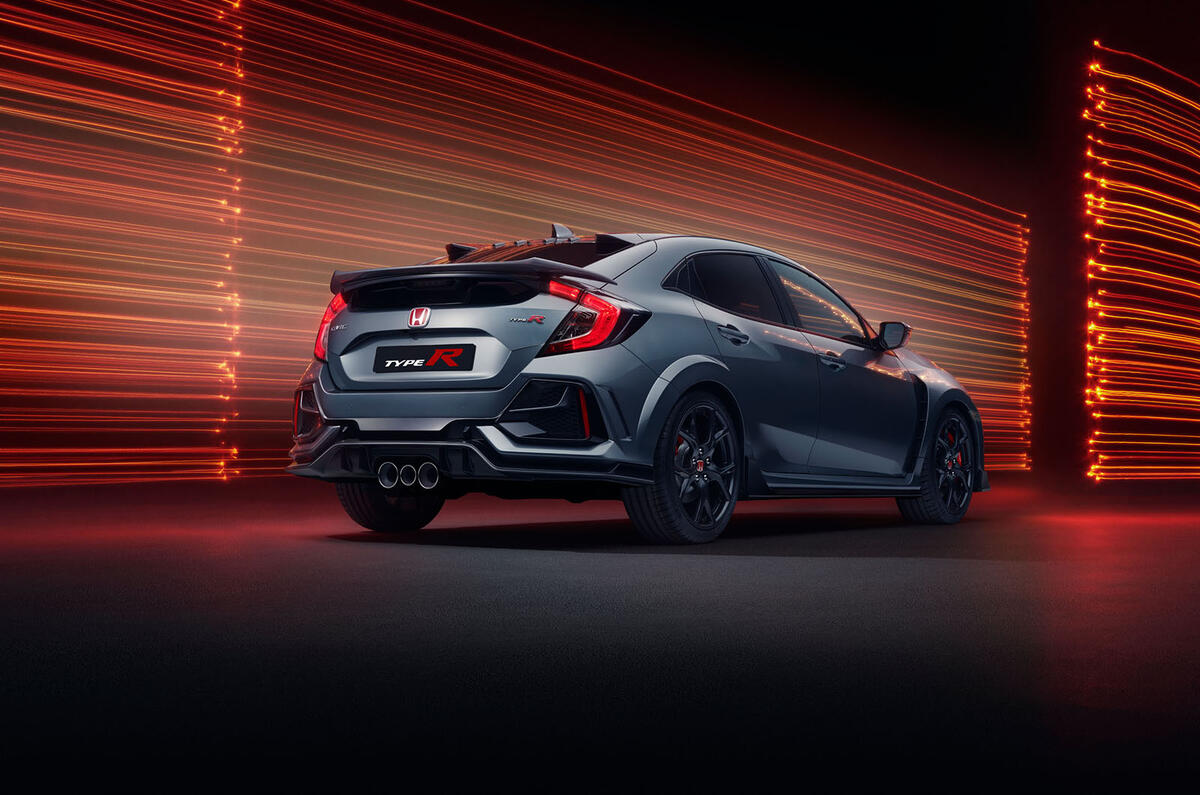
Honda has refreshed the Civic. This will mean tweaks to the Type R hot hatch, including exterior revisions and a boost in technology and perceived quality inside. But the biggest news is that there will be faster, more hardcore Nürburgring-focused special – inspired by the Type R that set a new front-wheel-drive lap record on the track – to rival the Renault Mégane RS Trophy.
Jaguar XF
Expect changes as significant as the XE's recent mid-life refresh, with cabin upgrades, expanded technology, an evolved exterior appearance and engines that are more efficient, as Jaguar gears up for a renewed attack on the German heavyweights. Early indications suggest the XF will gain a centre console set-up based on that of the I-Pace.
Jeep Renegade PHEV
Jeep's first plug-in hybrid has a 1.3-litre petrol engine, an electric motor and the promise of 31 miles of electric range. The company expects the electrified SUV to "sell in volume" and will price it aggressively to help its chances against more established rivals such as the Peugeot 3008 and Renault Captur PHEVs.
Kia Sorento
The fourth-generation Sorento is taking Kia's large SUV upmarket once again, with an imposing look and an appealing interior. The Korean firm also says this is the most high-tech car it has yet produced.
Land Rover Discovery Sport PHEV and Range Rover Evoque PHEV
A new hybridised version of Land Rover's mid-sized family SUV is tipped to receive a three-cylinder engine. The powertrain - to be taken from the new Evoque - will mate a 197bhp 1.5-litre Ingenium petrol unit to a 107bhp electric motor and 11.3kWh lithium ion battery for an electric-only range of around 40 miles. We expect the PHEV to command a small premium over the £31,575 standard model.
Lotus Evija

Claimed to be the "most powerful production car in the world", the fully electric Evija is a spectacular statement of Lotus's intent under new owner Geely. It's unlike any car the Norfolk company has produced before, but the firm promises it will have Lotus-style handling alongside blistering acceleration and a top speed that starts with a two.
Mercedes-AMG GT R Black Series
AMG's fastest series production model yet is also the swansong for its GT flagship before the model makes the switch to an electrified four-wheel-drive powertrain in 2021. The Black Series will weigh roughly the same as the limited-run GT R Pro, but tweaks to the twin-turbo 4.0-litre V8 will boost power to nearly 700bhp, with aero and chassis modifications enhancing all-round driveability.
Seat Ateca
The hugely popular SUV that transformed Seat's fortunes is set to get its own transformation with a mid-life facelift, which will see the model brought into line with the newer Tarraco and soon-to-launch Leon with mild styling tweaks, greater levels of interior equipment and technology upgrades. More significantly, the addition of a hybrid powertrain would help Seat reach its electrification goals. It is likely to use the same 1.5-litre plug-in hybrid as the upcoming Leon, while other engines could receive the same 48V mild hybrid systems seen on other VW Group models.
Volkswagen Touareg R
The latest addition to Volkswagen's rapidly expanding R performance range is its first plug-in hybrid. The SUV uses a plug-in hybrid drivetrain to deliver 456bhp and can travel for up to 30 miles in electric-only mode. Performance figures have yet to be confirmed, but expect the 0-62mph sprint to take around 5.0sec.
September
Audi A3 Saloon
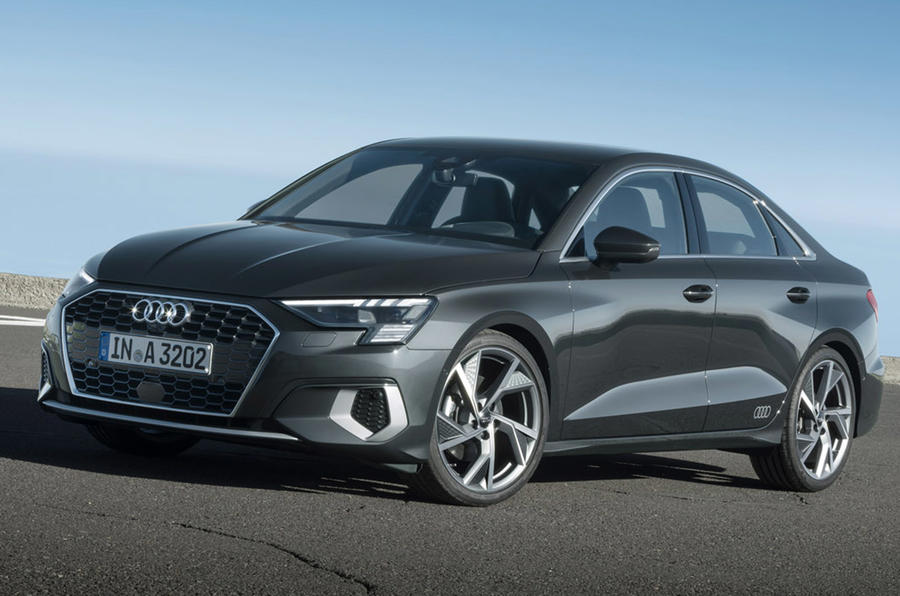
Booted version of the new A3 will rival the BMW 2 Series Gran Coupé and Mercedes-Benz A-Class saloon with subtly evolved styling and a range of petrol, diesel and plug-in powertrains. Audi also promises sharper handling yet also greater ride comfort, along with a tech-heavy interior. Pricing is expected to start at around the £26,000 mark.
Audi Q5
Ingolstadt's mid-sized SUV will be subtly restyled for 2020, to bring it into line with its recently refreshed Q7 and A4 stablemates. We're expecting new bumpers and lights to be among the more noticeable styling changes, with the interior set to receive Audi's latest touchscreen infotainment technology.
BMW 5 Series facelift
Despite BMW's recent affinity for giant grilles, the new 5 Series will sport a much less in-your-face front end than the new X7 and 7 Series. More significant changes will happen inside, where the Mercedes E-Class rival stands to receive a revised central display with integrated infotainment functions, new instrument graphics and the latest version of BMW's iDrive system.
Cupra Leon and Leon eHybrid
Newly independent performance brand Cupra has revealed its version of the new Seat Leon – with the option of a plug-in hybrid powertrain. The so-called eHybrid combines a 1.4-litre turbo petrol engine with an electric motor and a 13.1kWh battery, giving it a 37-mile electric-only range. The regular petrol version, available as a hatchback or an estate, comes with 242bhp or 298bhp.
Ferrari 812 GTS
Hold on to your hats: the 780bhp drop-top 812 is the world's most powerful production convertible and Ferrari's first V12-powered drop-top in 50 years. Despite an increase in weight, the GTS is said to just about match the phenomenal performance figures of its fixed-head sibling, with the retractable hard-top opening all the way in 14 seconds.
Jaguar E-Pace
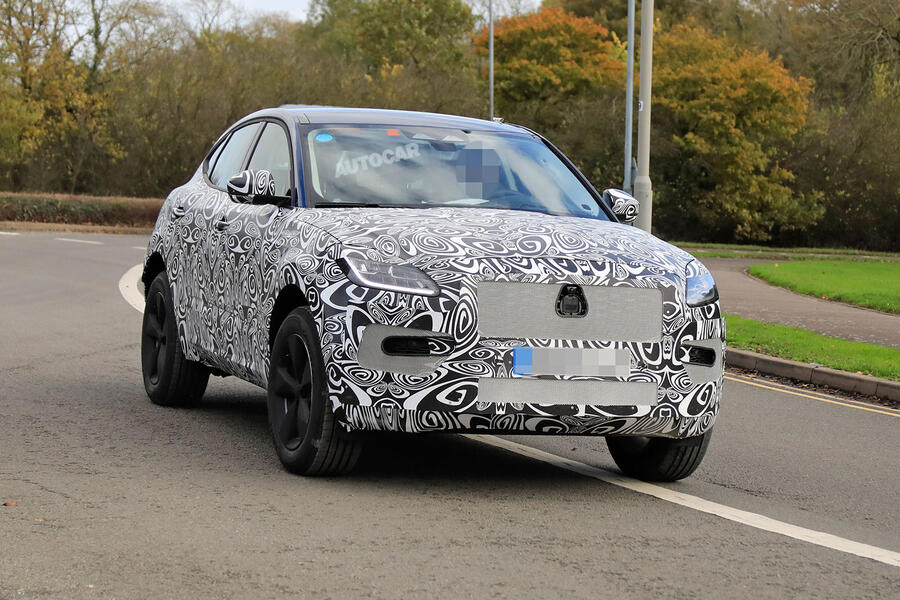
An early refresh for Jaguar's smallest SUV, which only arrived in 2018. Expanded safety and driver assistance systems will be the main focus, while the BMW X2 rival will receive a streamlined selection of engines and sharper styling based on the new XE and F-Type. The E-Pace's interior layout and technology, however, are both still fresh, so we don't expect to see any radical changes inside.
Maserati Ghibli
This is an important year for Maserati - perhaps the brand's most important in decades. Along with an all-new sports car, many of the Italian firm's models will come in for a significant overhaul aimed at finally pushing volumes up to where they need to be. The Ghibli, Maserati's BMW 5 Series rival, will receive the brand's first hybrid powertrain and level two autonomous driving tech, along with revised styling inside and out.
Maserati Levante
Joining the Ghibli will be an overhauled Levante. The premium SUV failed to deliver the sales figures that were expected of it and is now falling behind the pace. A mid-cycle refresh looks to bring it up to the class standard, particularly in terms of technology.
Maserati Quattroporte
While the updated Levante should be the bigger seller, Maserati's range-topping luxury saloon is also set to gain updated looks and interior refinements to raise its game against luxury rivals. It will also receive hybrid power, like its siblings.
Mercedes-AMG GT 73 4-Door Coupé
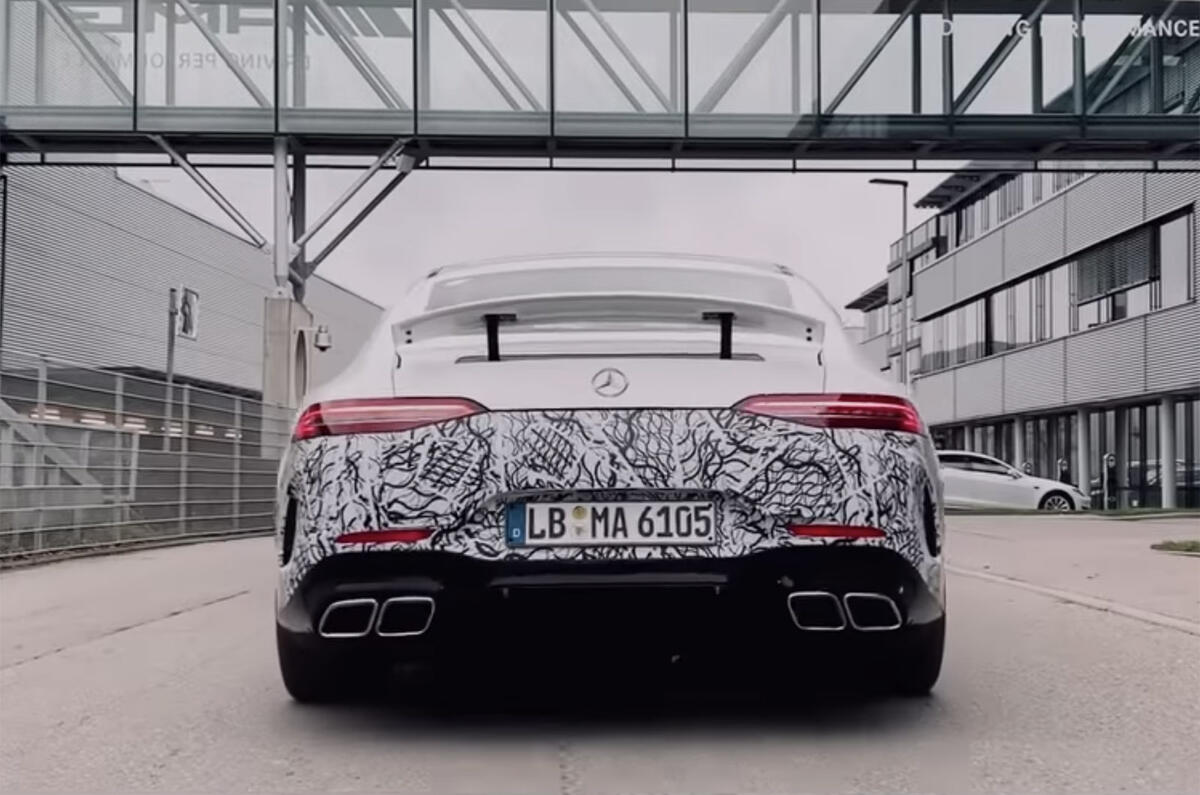
Two years after the brilliant, conventional GT 63, will come the plug-in hybrid GT 73. This will use the same twin-turbocharged 4.0-litre V8 engine but match it with an electric motor on the front axle, resulting in four-wheel drive and a 0-62mph time below 3.0sec. Oh, plus super-low official CO2 emissions, and thus BIK tax, thanks to a 31-mile electric-only range. Madness.
Mercedes-Benz E-Class facelift
The 2020 E-Class is set to receive an exterior overhaul to bring it in line with the newer models in Mercedes' range, including the A-Class and the recently introduced CLS. Saloon, coupé, estate and cabriolet models will all be offered, with interior upgrades likely to include the latest MBUX infotainment hardware. Voice control, touchpad-style steering wheel controls and an overhauled interface are expected. The engine line-up is unlikely to see a major shake-up, but more models will use Mercedes' EQ Boost mild hybrid system to increase efficiency. The plug-in hybrid E350e will also make a return, alongside several hot AMG variants.
Mitsubishi Outlander PHEV
Mitsubishi secured a win with the Outlander as one of the first plug-in hybrid SUVs to market. But the product is dated now, which is why 2020 will bring a ground-up redesign, as spyshots have already shown. As well as a redesigned exterior and overhauled cabin, we can expect a major upgrade to its plug-in hybrid system focused on improving efficiency and all-electric range.
Porsche 718 GT4 RS
Spotted just a day after Porsche's boss of sports cars hinted that it was in development, the 718 GT4 RS is a feistier take on the acclaimed GT4. Powertrain mods are unconfirmed, but bodywork additions hint at some serious track potential. Porsche has never produced a GT4 RS before, claiming in the past that one would be too close to its 911 GT models in terms of price and performance, but the new 4.0-litre flat six found in the GT4 will need to see use in more models to justify its development costs.
Skoda Octavia iV
The new version of Skoda's best seller will gain a plug-in hybrid option for the first time, in both hatchback and estate forms. Both will be powered by a 1.4-litre petrol engine and a 101bhp electric motor, which will deliver a combined 201bhp through a six-speed DSG gearbox. Electric-only range is expected to be around 34 miles, and the saloon version should be capable of 0-62mph in 7.9sec. They will share the same exterior design as the standard Octavia, which has been updated to match Skoda's other non-SUV models, the Scala and Superb.
Skoda Octavia vRS iV
The hot version of the all-new Skoda Octavia will be initially sold as a plug-in hybrid, badged the vRS iV. Like the new Cupra Leon eHybrid, this uses a 1.4-litre turbo petrol engine and an electric motor, giving it a 0-62mph time of 7.3sec and a top speed of 152mph. Petrol-only versions will follow shortly afterwards.
Toyota RAV4 Plug-in Hybrid
With 298bhp, the hot plug-in RAV4 will be the company's quickest alternatively fuelled car yet, managing 0-62mph in 6.2sec while still delivering what Toyota calls "best in class" fuel economy and emissions. The fifth-generation RAV4 will be capable of 37 miles of electric-only running in PHEV form, which uses the same 2.5-litre petrol engine as the regular hybrid and has four-wheel drive as standard. It will also benefit from Toyota's most up-to-date driver assistance systems and get interior technology upgrades including a colour head-up display.
Toyota Yaris
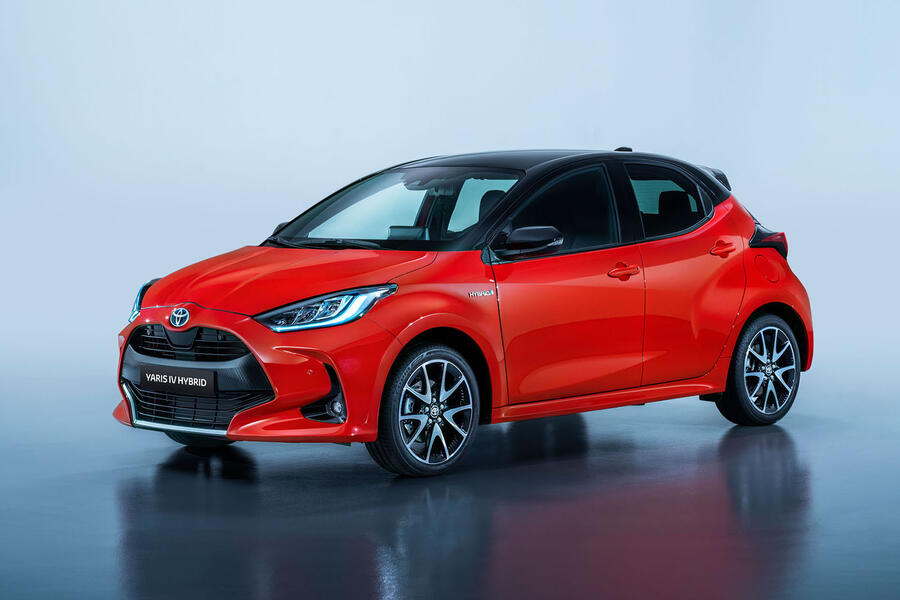
Fresh from turning automotive vanilla, the Auris, into the dynamically engaging and interesting Corolla, Toyota aims to do a similar trick with the new Yaris, which is lower, wider and a touch shorter than before, making it the only supermini less than four metres in length. It has switched to a new platform, promising improved dynamics, and has a new interior that looks like a huge improvement over the drab Yaris it replaces. Unlike other Toyotas, 1.0-litre and 1.5-litre petrols will be offered alongside a 1.5-litre petrol-electric hybrid.
Volkswagen Golf GTD
While other manufacturers are cutting back or abandoning diesel production altogether in 2020, Volkswagen is persisting with a performance variant of the eighth-generation Golf that will drink from the black pump. It shares a chassis with the Golf GTI and mirrors it in terms of looks but uses a 2.0-litre turbodiesel engine and mild-hybrid technology.
Volkswagen Golf GTI
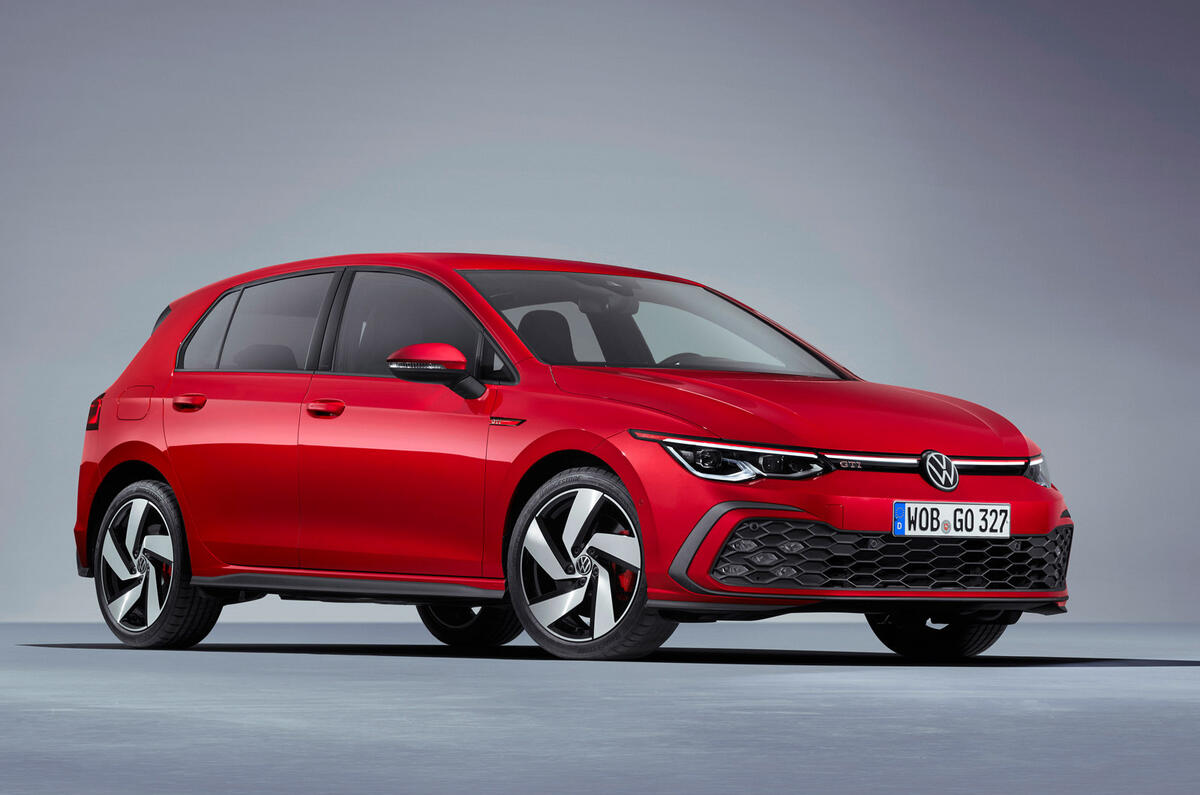
The GTI will arrive with 242bhp in standard form, with a GTI Clubsport promising 287bhp from the EA888 2.0-litre petrol engine. Styling is likely to be subtle but will still set the GTI apart from the regular Golf with dual-exit exhaust pipes, red brake calipers, larger air intakes and a more aggressive bodykit.
Volkswagen Golf R
The most powerful Golf variant is expected to again use a heavily modified version of VW's venerable EA888 2.0-litre petrol motor, paired with four-wheel drive. It should be offered in two performance levels, with an entry-level R due to pack at least 300bhp to rival the likes of BMW's M135i and the Mercedes-AMG A35. A range-topping Golf R Plus could then have that output boosted to 350bhp - less than the 400bhp previously rumoured that would have seen it go head to head with Mercedes-AMG's A45.
October
Audi A3 e-tron
Audi will look to further expand its electrified line-up with a successor to the plug-in hybrid A3. While little is known about its powertrain, or whether it will retain the original PHEV's front-driven layout, it is understood to borrow battery technology from the brand's E-tron SUV to allow for increased electric range. The A3 E-tron will receive the same interior technology, which Audi claims will make it the most advanced hatchback in the class.
Audi RS3
The hottest version of the all-new Audi A3 Sportback will make a 394bhp hot hatch rival to the Mercedes-AMG A45 S, thanks to continued use of Audi's turbocharged five-cylinder 2.5-litre engine.
Cupra Formentor
The flagship Cupra model will be a bespoke SUV, not a sports car. The production version of the Formentor will retain most of its concept car styling, with dimensions lower, wider and longer than the Ateca on which it is based. It will arrive with 1.4-litre petrol engine mated to an electric motor and dual-clutch DSG gearbox, providing a combined power output of 242bhp and a WLTP-certified electric range of around 30 miles. A petrol-only model has yet to be confirmed and will be quickly followed by Seat-badged versions with less powerful engines.
DS 9
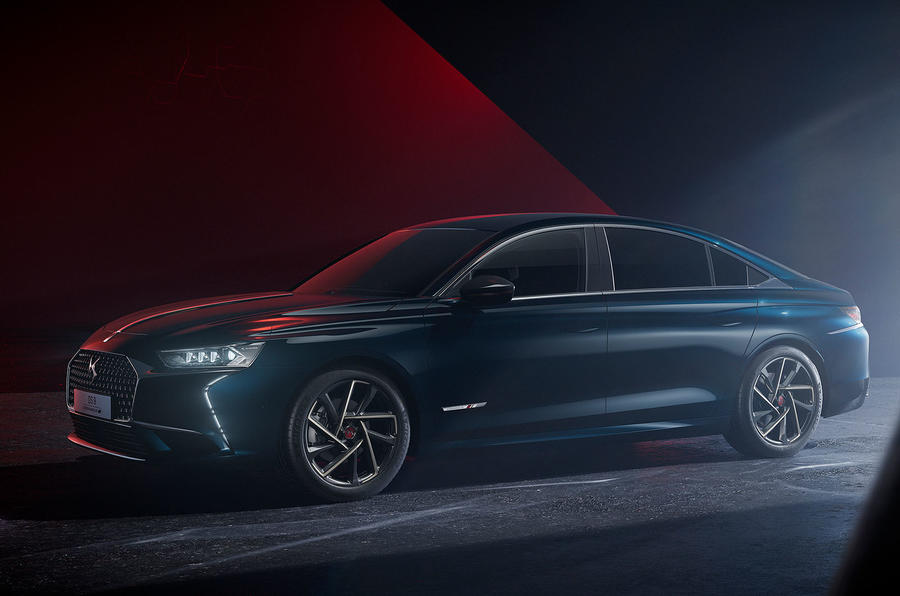
The French luxury brand's flagship saloon will arrive on the PSA Group's EMP2 platform, which also underpins the Peugeot 508. The Audi A4 rival shares many design cues with the DS 7 Crossback SUV and offers a 222bhp petrol engine and a range of petrol-electrci plug-in hybrid powertrains with up to 335bhp. These have an electric-only range of up to 31 miles.
Ferrari Roma
The car described by the firm itself as "a Ferrari for people scared of driving a Ferrari", the front-engined two-seat Roma shares some underpinnings with the Portofino drop-top but features all-new styling, including active aerodynamics. Power comes from a revamped version of the turbocharged 3.9-litre V8 engine seen elsewhere in Ferrari's line-up, partnered to the eight-speed dual-clutch automatic gearbox that was introduced on the SF90 Stradale. The Aston Martin Vantage and Mercedes-AMG GT rival produces 612bhp, sent to the rear wheels, and will be capable of a 0-62mph time of 3.4sec and a top speed of more than 199mph.
Ford Mustang Mach-E
The Ford Mustang is arguably the antithesis of a high-riding electric SUV. It's a muscle car, best served with a rorty V8 producing plenty of noise. So why has Ford stuck that pony badge on the Mustang Mach-E, its new high-riding electric SUV? The idea, according to Ford designer Murat Gueler, is to give its new EV a dose of the Mustang's "emotion and drama" with muscle car-like styling, but without resorting to pastiche. The hope is that it can give the Mustang Mach-E, which will cost around £60,000 in 332bhp First Edition form, the premium sheen necessary to take on the likes of the Tesla Model Y. It certainly has the specs to do so – and hotter GT and Shelby versions are on the way in a bid to win over Mustang sceptics.
Hyundai Tucson
Hyundai's new Tucson SUV will get a new design, inspired by the Nexo FCEV, new technology, a range of electrified powertrains and a hot N version.
Maserati MC20
Little is known so far about the MC20, which apparently heralds Maserati's "return to the world of racing" and the Italian brand's first all-new model since 2015. Test mules of the sports car have been seen based on the now-dead Alfa Romeo 4C, while the engine is "a new powertrain entirely developed and built by Maserati".
Mercedes-Benz CLA PHEV and CLA Shooting Brake PHEV
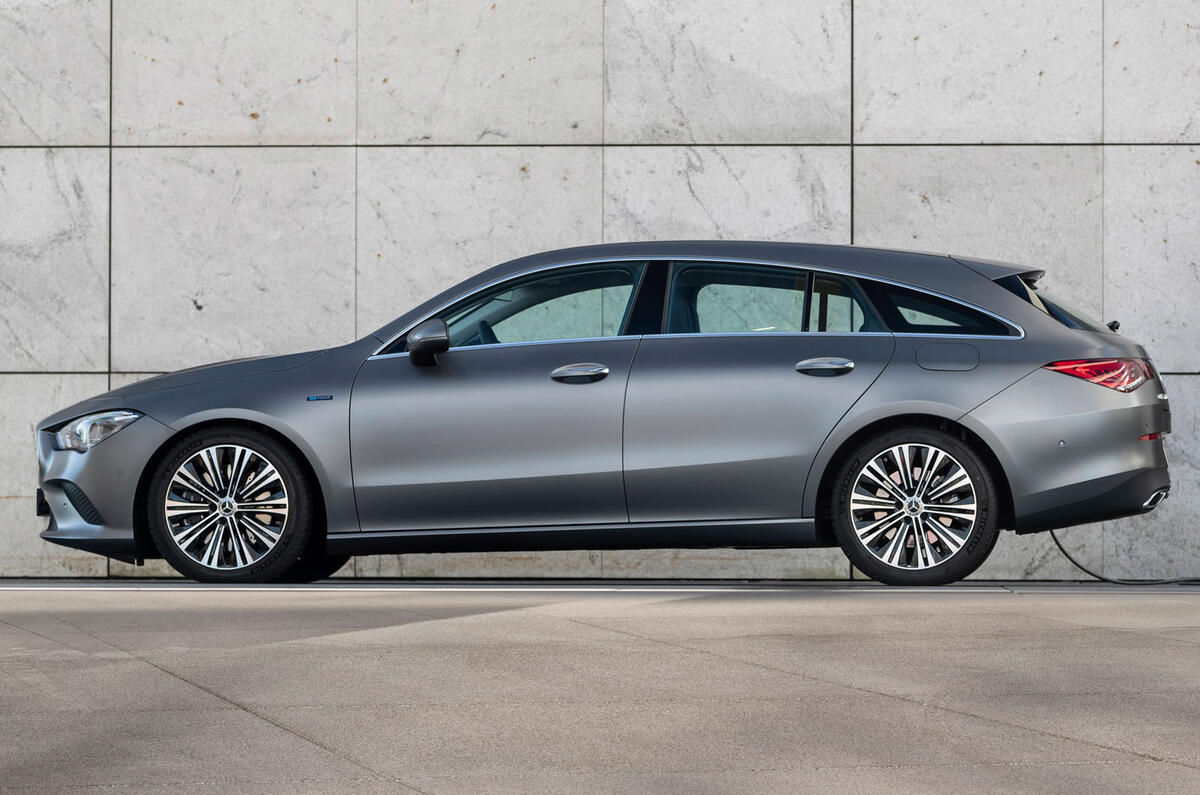
Mercedes has unveiled plug-in hybrid versions of its CLA and CLA Shooting Brake, the sporty and stylish five-door fastback and estate siblings of the commendable latest A-Class. These get an impressive electric-only range of up to 49 miles; the CLA 250e coupé has official fuel economy starting from 188mpg and CO2 emissions of just 31-35g/km.
Mercedes-Benz EQV
With the electric revolution in full swing, it's unsurprising that Mercedes-Benz, king of filling niches before others, is one of the first to market with an electric luxury (albeit largely van-based) MPV. Based on the well-established V-Class, the EQV will deliver 252 miles of range and a choice of seating configurations.
Mini Countryman
Mini's popular SUV is also its newest model, having launched in 2017, so a mid-cycle refresh will largely focus on updated looks and more equipment over any mechanical changes. The front and rear bumpers, front grille and lights are expected to change, with the introduction of adaptive matrix-beam LED headlights and standard LED tail-lights that bring the now-familiar Union Jack to the Countryman line-up. New personalisation options and a fresh range of wheel designs will complete the refresh. An unchanged engine line-up should see a 134bhp 1.5-litre three-cylinder petrol for the Cooper, a 189bhp four-cylinder for the Cooper S and a 302bhp 2.0-litre for the newly launched John Cooper Works model.
Ssangyong Korando EV
The South Korean firm's new Nissan Qashqai rival arrived in 2019 with conventional petrol and diesel powertrains but will soon gain an electric variant inspired by the recent e-SIV concept. It is expected to get only small visual changes compared with the conventionally powered car, which is now in its fourth generation. Ssangyong UK boss Nick Laird said the upcoming electric version would still be "a proper 4x4", suggesting it will feature all-wheel drive and compete with the diesel version for towing ability.
Subaru Levorg
The second-generation Levorg will aim to turn around slow UK sales with an overhauled version of Subaru's four-wheel-drive estate. It will be built on the Subaru Global Platform and be powered by a newly developed 1.8-litre turbocharged petrol engine. The company is also working on a performance version, dubbed STI Sport, which should feature an increased power output and more aggressive styling.
Volvo XC40 P8 Recharge
The Swedish brand's first EV takes the immensely popular XC40 and swaps the conventional powertrain for a 201bhp electric motor mounted to each axle. Combined, they deliver 402bhp and 487lb ft of torque, which helps the compact SUV achieve achieve 0-62mph in 4.9sec and a limited top speed of 112mph. A 78kWh battery should manage at least 248 miles of range and be capable of 150kW DC rapid charging. The XC40 Recharge will also be the first Volvo to use an all-new infotainment system developed by Google.
November
Alpina XB7
BMW doesn't currently offer a full-fat M variant of its largest SUV, leaving Alpina to fill the gap. The XB7 is set to receive the brand's usual visual upgrades, including large multi-spoke wheels, redesigned front bumper and Alpina badging, along with an overhauled suspension system focused on ride comfort. It will most likely use the 4.4-litre twin-turbo V8 found in the X7 M50i, with performance boosted to around 600bhp - the amount offered by the same unit in the B5 saloon and estate. There could also be a high-performance XD7 diesel variant in the works.
McLaren 765LT
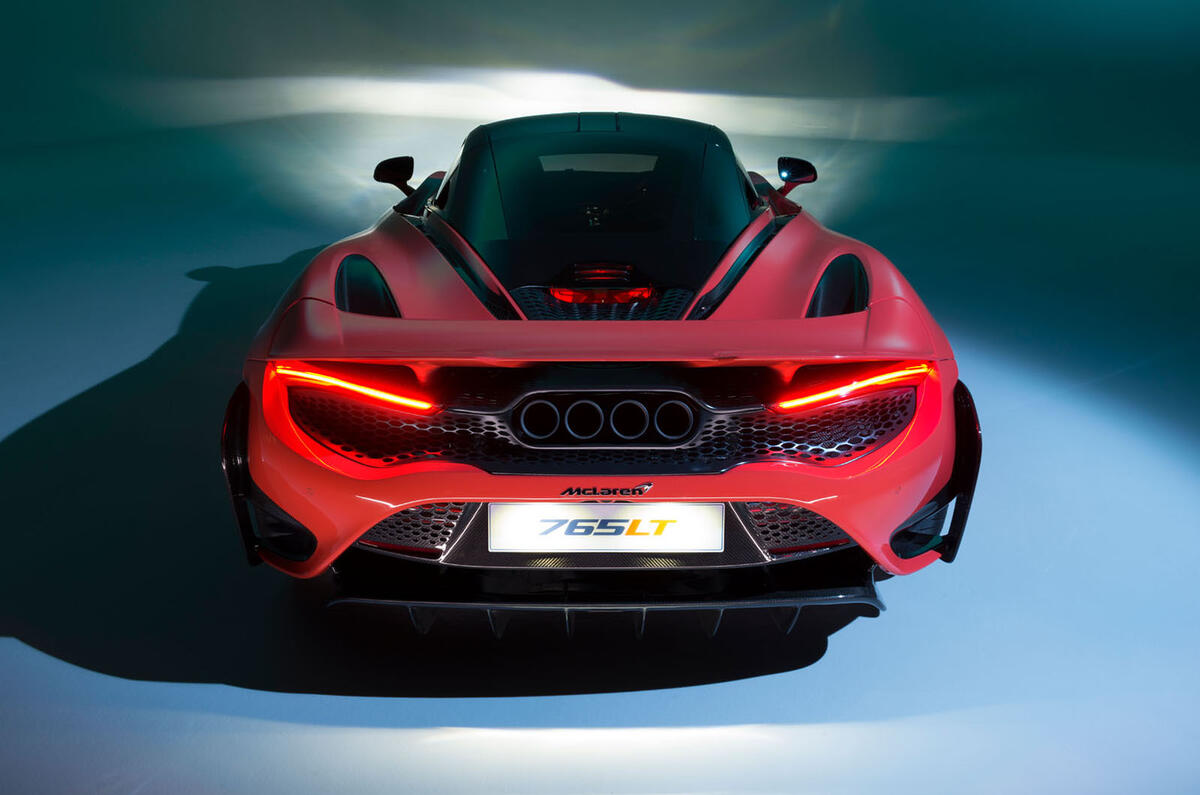
The latest track-focused limited-edition Longtail model from McLaren is 80kg lighter than the 720S upon which it's based and gets an extra 44bhp from its mid-mounted twin-turbocharged 4.0-litre V8. In addition to a whole host of aerodynamics-improvind addenda, this means it can lap a 'reference track' 2.5sec quicker, says McLaren.
Mercedes-Benz S-Class
The seventh generation of Mercedes-Benz's flagship model will aim to further raise the bar in the luxury saloon segment – and it is expected to introduce new technology and systems that will eventually trickle down the range. Likely to be offered in long-wheelbase form only (good news for buyers who prefer to be driven), the S-Class will be built on an all-new Mercedes platform and spy shots suggest that it will feature the biggest touchscreen yet seen in any of the firm's models. Expect a choice of petrol and diesel engines, along with mild hybrids and plug-in hybrids, before the arrival in 2022 of the all-electric EQS, bidding to be the world's best all-round luxury EV.
MG HS PHEV
MG is aiming to build on the UK sales success of its debut electric car, the ZS EV, by introducing a petrol-electric plug-in version of its larger HS SUV. With a 1.5-litre turbocharged petrol engine providing 166bhp and an electric motor delivering 121bhp through a 10-speed automatic gearbox, the value-led PHEV will be the most powerful MG since 2003's V8-powered MG X-Power SV. It should manage the 0-60mph sprint in around 5.8sec, while covering up to 47 miles on electric power alone.
Peugeot 508 PSE
For production, the Peugeot Sport Engineering (PSE) version of the 508 Fastback could use the 355bhp 1.6-litre plug-in hybrid powertrain announced last week in the platform-sharing DS 9. The 508 PSE concept could hit 0-62mph in 4.3sec, while an 11.8kWh battery provided it with an electric-only range of 31 miles.
Porsche Panamera
A subtle visual refresh for Porsche's four-door grand tourer will aim to bring it in line with the 992-generation 911, with new tail-lights joined by an LED strip, redesigned bumpers and a reprofiled grille that will make room for additional semi-autonomous driving systems. The Panamera should also see its first mild hybrid powertrains, with the S and 4S models gaining 48V electrical architecture on top of the familiar 2.9-litre twin-turbo V6 engine. This will later be followed by a plug-in hybrid.
Seat El-Born
The Spanish brand's debut EV will be a sibling to the Volkswagen ID 3, becoming the first non-Volkswagen model to launch on the MEB electric architecture. Its electric powertrain is likely to be closely aligned to the ID 3, meaning a rear-driven motor and a range of power outputs and battery capacities. Sitting on a skateboard chassis, the el-Born will be capable of 100kW DC rapid charging and should deliver around 260 miles of electric range.
Tesla Model Y
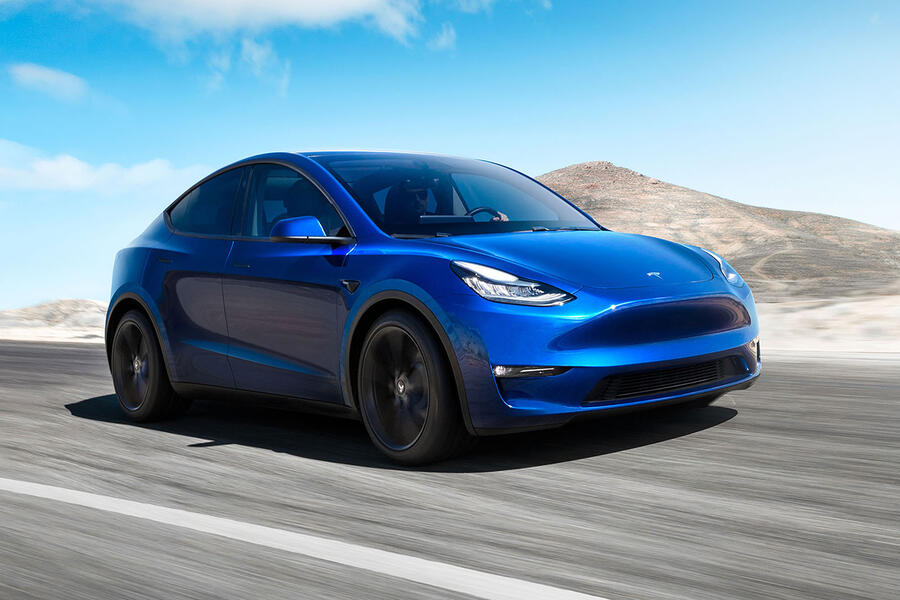
A high-riding SUV reworking of the Model 3, the Model Y is the most sensible Tesla yet, adding extra practicality to the Model 3's compelling mix of electric power and style. It shows the growing maturity of Tesla as an established car firm capable of producing desirable cars - although time will tell if UK deliveries meet expectations on timing.
Toyota Corolla GR
A hot version of the impressive new Toyota Corolla family hatchback is expected to be launched later this year, potentially with a hybrid powertrain, to rival the likes of the Ford Focus ST.
December
Alfa Romeo GTA and Giulia GTAm
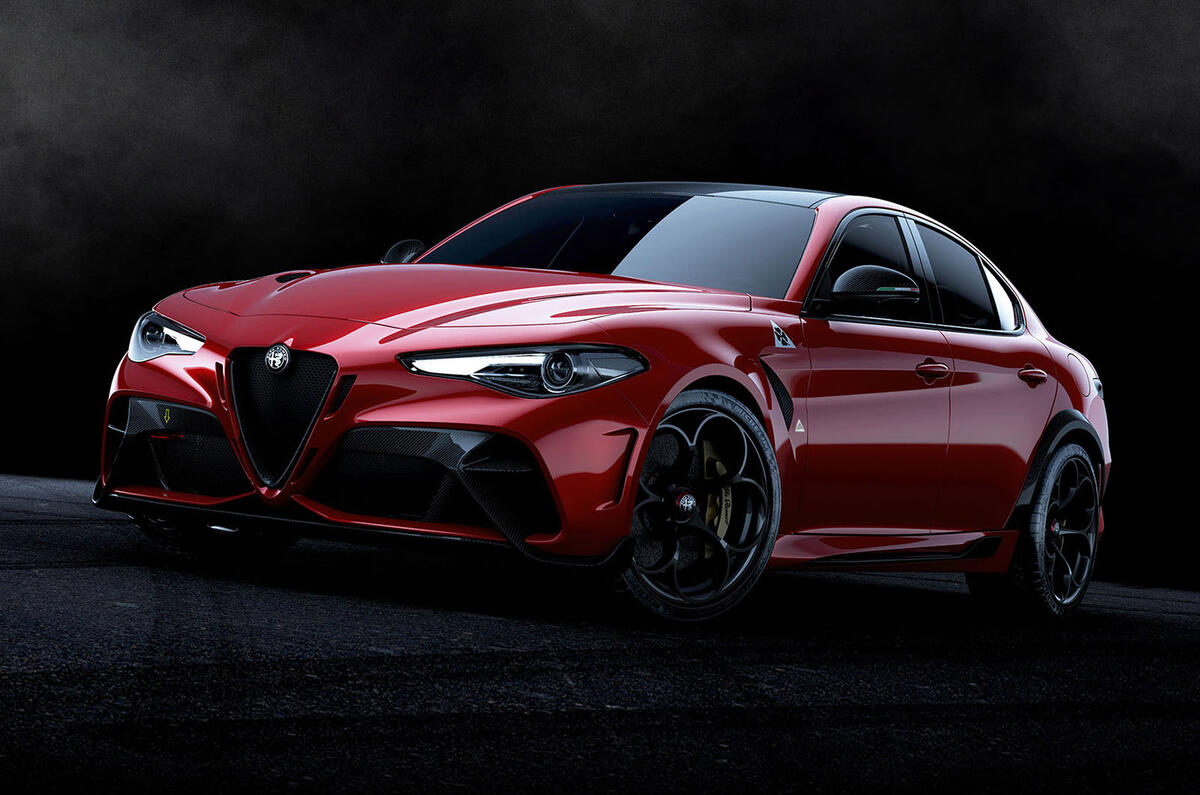
Alfa Romeo recently revealed its most powerful production car to date – a hotter version of the scintillatingly brilliant Giulia Quadrifoglio. The Giulia GTA gets 533bhp - up from 503bhp - out of Alfa's Ferrari-derived twin-turbocharged 2.9-litre V6, thanks to calibration tweaks and an Akraprovič exhaust. It was also 100kg lighter and gets some wild styling additions. The GTAm, meanwhile, gets harnessed carbonfibre front seats and ditches its rears, while adding a massive rear wing.
BMW iX3
New electric model will add a zero-emissions option to BMW's mainstream SUV line-up. Barely disguised prototypes show off a strong resemblance to the conventionally fuelled X3, with visual differences limited primarily to a blanked-off front grille and absent exhaust pipe. Previously revealed technical details indicate that a 70kWh battery pack will offer a range of nearly 250 miles - slightly more than the Audi E-tron - and permanent four-wheel drive is likely to be carried over from the 2017 iX3 concept.
Citroën C4 Cactus EV
The quirkiest model in Citroën's current line-up gets an electric variant, sitting on the same platform as the e-Corsa of PSA Group sibling Vauxhall. That means a 50kWh battery pack will send power to a 134bhp front-mounted electric motor, giving the larger C4 a slightly reduced range of around 200 miles.
Ford Puma ST
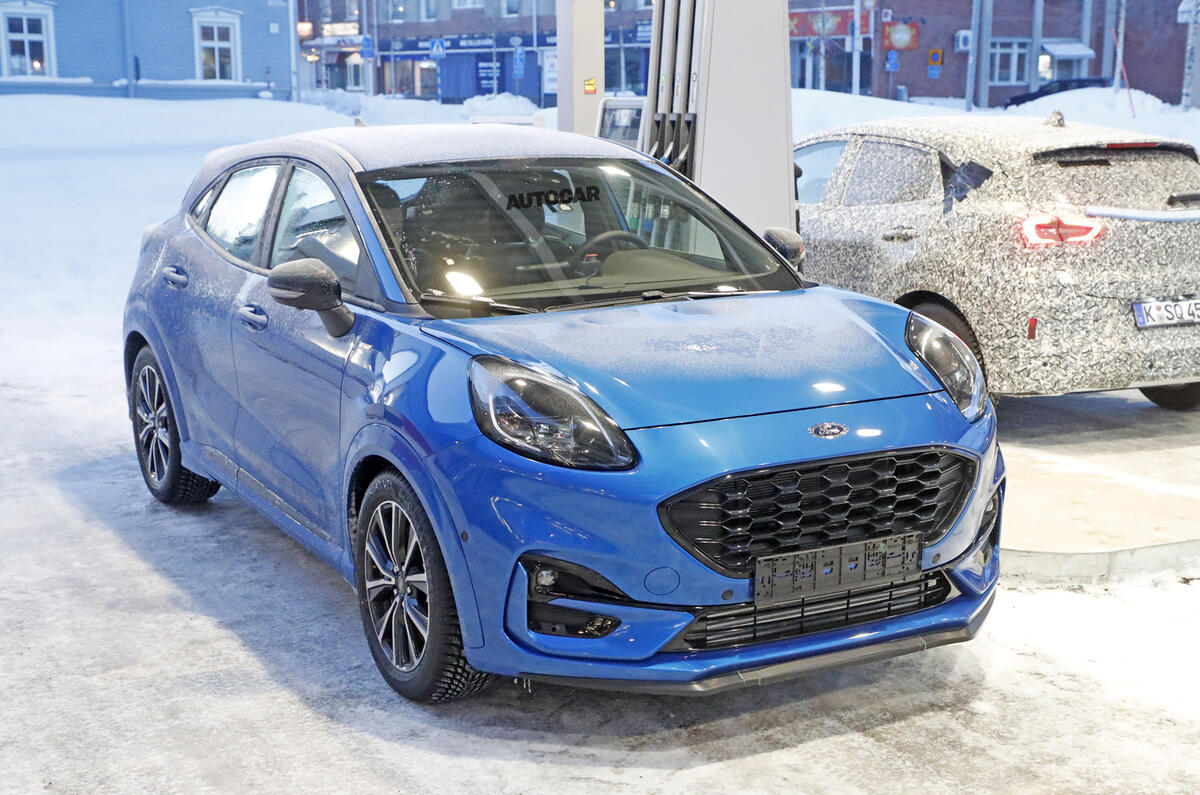
It's not hybrid or pure electric, but Ford's next ST will rewrite the hot hatchback rulebook by bringing the raw excitement of the celebrated Fiesta ST to the small crossover class. It was always a natural fit for the return of the Puma name that once graced a low-cost but entertaining coupé. Expect a drivetrain similar in execution to the Fiesta's, with a 197bhp 1.5-litre three-pot engine and, we hope, some of that car's handling nous.
McLaren Elva
The latest Ultimate Series McLaren is a two-seat open-top roadster with a 4.0-litre twin-turbocharged V8 engine producing more than 800bhp - and no roof, windscreen or side windows. Instead, the Elva uses an active air management system built into the bonnet that deflects air above the occupants above certain speeds. According to the company, it should reach 62mph in "under three seconds" and can manage 0-124mph in 6.7sec, making it faster than the track-focused Senna. The Elva will be limited to just 399 examples and cost from £1.4m.
Mercedes-Benz EQA
Mercedes' entry-level EQ model will eschew the hatchback stylings of the A-Class and instead mimic the popularity and practicality of the GLA crossover. This bodystyle leaves more space under the seats for battery cells without impacting on interior room, thanks to a higher roofline. Little is known about the electric powertrain it will use, other than a predicted range of around 249 miles. It should be priced to compete directly with the BMW i3, with styling that borrows heavily from the EQC electric SUV.
Porsche 911 GT3
The first 992-generation Porsche to come through the brand's Motorsport operation at Weissach, the new GT3 is set to use the same naturally aspirated 4.0-litre flat six engine as the limited-run 991-series 911 Speedster. Performance should therefore match or exceed the 503bhp Speedster, with a track-focused suspension setup, large rear wing for increased downforce and an optional manual gearbox on the cards as well.
Rolls-Royce Ghost
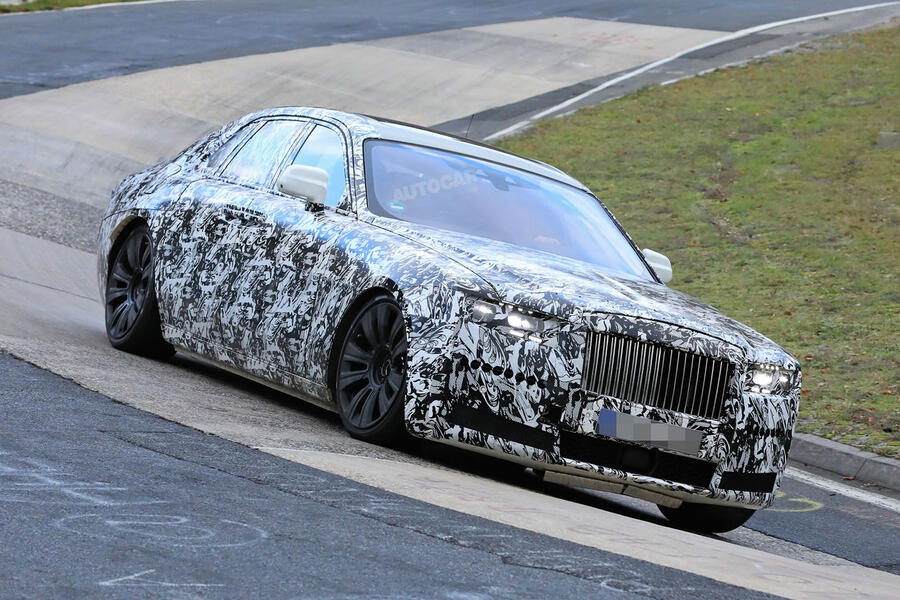
Last year, the new Ghost was spied at the Nürburgring being benchmarked against a BMW M5. You don't do that if you're only expecting the owner to sit in the back. The Ghost will take on the new Flying Spur with a 6.6-litre twin-turbo V12 and is expected to gain four-wheel drive for the first time.
Tesla Model S Plaid
The dual-motor Model S Performance is already capable of 0-60mph in 2.4sec and has a top speed of 162mph, but the recent arrival of Porshce's Taycan has seen the electric car pioneer head to the Nürburgring in an effort to best its German rival's lap times. The Model S Plaid (named in reference to classic Mel Brooks comedy Spaceballs) will gain an extra motor, allowing for torque vectoring, and battery capacity will be increased to deliver more performance without sacrificing range. Prototype cars have been spotted with dramatic rear wings, a wider rear track, bigger wheels and lowered suspension, but it is unknown how much will make it through to production.
Tesla Model X Plaid
Any improvements Tesla makes to the Model S saloon in its goal to best the Porsche Taycan will then be carried across to what is already the fastest-accelerating seven-seater on sale. Upping the Model X motor count to three could see it shed even more time off an already meteoric 0-60mph time of 2.7sec, while battery capacity is also expected to increase.
Toyota GR Yaris
Okay, so it's not a hybrid, but this bonkers new-age hot hatch is a statement of intent for Toyota's exciting future. "No more boring cars," said president Akio Toyoda in 2018. Does 257bhp from the lightest production 1.6-litre engine ever made, four-wheel drive, new double-wishbone suspension and a bespoke bodyshell count? The Yaris GRMN was the first glimmer of change at Toyota, and this is the electrifying result.
Volkswagen Golf Estate
While the eighth-generation Golf won't be offered in three-door, Plus or Cabriolet forms, the range will include a wagon bodystyle towards the end of the year. The Golf Estate will, of course, offer a bigger boot than the standard hatchback while retaining the same styling, tech-laden cabin and selection of petrol, diesel and hybrid powerplants.
Wiesmann Project Gecko
After a short hiatus, German sports car maker Wiesmann will return with the cryptically named ‘Project Gecko’, a lightweight roadster set to use a twin-turbocharged 4.4-litre V8 powertrain sourced from BMW’s M division. The front-mid-mounted engine will power the rear wheels through a BMW-sourced automatic gearbox and promises 50/50 weight distribution, along with styling inspired by the the limited-edition GT MF5 of 2009.
Related News
